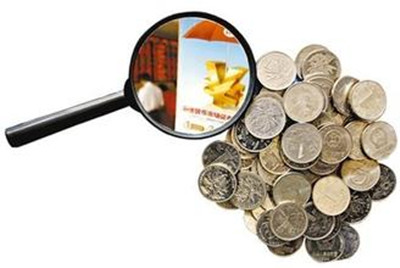貨幣市場基金
Faking the buck
偽造面值
America sets new rules for a common short-term investment
美國針對常見短期投資設定監管新規
IT IS a huge investment class: a 2.8 trillion one, to be exact. And it had long been thought of as a mundane one, just a notch more adventurous than a current account. Yet writing new rules for America's money-market funds, which invest in short-term commercial and government debt, has been “one of the most flawed and controversial” deliberations ever undertaken by the Securities and Exchange Commission, Wall Street's main regulator, according to Luis Aguilar, the only one of the five commissioners in office throughout the process.
貨幣市場基金是一個巨大的投資產業:準確而言,其資產規模達2.8億美元。它長期以來都被認為無甚特別,只是比活期賬戶稍具風險性罷了。然而,據美國證交會辦公室五個委員之中唯一參與整個監管新規制定進程的路易斯阿吉拉爾稱,美國證券交易委員會目前針對投資于短期商業和政府債務的貨幣市場基金出臺了新規,這份規章是作為華爾街主要監管機構的證交會有史以來“最具缺陷的和爭議”的商議之一。

By a 3-2 vote on July 23rd, the SEC at last approved two big changes. The first allowed funds to impose fees on redemptions or suspend them for up to ten days to prevent runs. The second requires that the most volatile funds, which cater to institutions and invest in corporate debt, disclose the value of a share to a fraction of a penny.
7月23日,美國證券交易委員會的五名委員以3比2的投票結果批準了兩項監管規定的大變革。其一是允許基金在贖回時征收流動性費用或將贖回期暫緩十天,以防止擠兌;其二是要求投資公司債券、面向機構投資者的優質市場基金不再維持每單位1美元的固定股價。
The second change is more important than it sounds. By convention, money-market funds are priced at a steady dollar a share; changes in value are reflected only in the interest they pay. Variations in the value of the underlying assets are small because they mature in a matter of days, but they do occur. In the past, that has been hidden by tiny amounts of rounding. Though this ruse will now be banned for some funds, those that cater to individual investors will still be allowed to use it.
第二個變革比聽起來更加重要。按照慣例,貨幣市場基金的價格固定為每單位1美元,價值的變動僅僅反映在支付的利息上。因為數日后即已到期,其資產價值變動很小,然確實有變化。在過去,資產價值的變動一直被微量的四舍五入所隱藏。雖然現在一些資金已禁止進行此類處理,那些面向個人投資者的基金仍被允許繼續使用這種手段。
That matters, since the fixed value contributed to the impression that money-market funds offered the safety of bank deposits with higher returns. In September 2008 that notion was punctured when the Reserve Fund, which had a little over 1% of its assets invested in debt issued by Lehman Brothers, was forced by the investment bank's collapse to “break the buck”: reveal a decline in the value of its shares to slightly less than 1. That sparked panicked redemptions at it and other funds.
這很能說明問題,固定價值給人的印象便是貨幣市場基金擁有可比擬銀行存款的安全性,且能提供更高收益。然而就在2008年9月,這一概念被撤下神壇。主要儲備基金將其略高于1%的資產投資于雷曼兄弟發行的債券,其后,雷曼投行破產,儲備基金的單位資產凈值“跌破面值”:每單位價格下降至略低于1美元,引發儲備基金和其他基金大規模恐慌性贖回。
The panic, in turn, crunched credit for firms that relied on short-term debt and fanned fears of a systemic meltdown. In response, the Treasury provided temporary guarantees for money-market funds, now lapsed. In 2010 and again in 2012 the SEC tightened restrictions on the kinds of securities funds could buy. But it rejected a plan to require funds to hold buffers of capital like banks, for fear it would further dent a battered business.
這股恐慌情緒反過來影響到依靠短期債務的企業信貸,激起人們對系統性崩潰的擔憂。對此,美國財政部不得不對貨幣市場基金提供臨時擔保。在2010年與2012年,美國證券交易委員會加強了對各類證券資金的購買限制。但它否決了一項要求基金如銀行般持有緩沖資本方案,以免其進一步削弱遭受重創的業務。
Mary Jo White, the SEC's chairwoman, says the new rules will “protect investors and the financial system in a crisis.” But the two dissenting commissioners fear they may do more harm than good. Allowing funds to suspend redemptions may actually spark runs, as investors rush to pre-empt any curbs, argues one of them. The other worries that the changes will divert the gullible to even more misleading investments, notably “stable value” funds. These cater to much the same niche as money-market funds and, despite their name, offer no guarantees. Rather than trying to protect investors from risk, the SEC might do better to ensure that the risks they are running are clearly disclosed.
美國證券交易委員會的女主席瑪麗?喬?懷特說,新規則將“于危機中保護投資者和金融體系。”但是存有異議的兩個委員擔心此舉可能弊大于利。其中一人認為,由于投資者遇到困境時總會匆匆先發制人,基金的暫緩贖回實際上可能激發擠兌風潮。另一人則擔心這些變革將輕信的人轉至更為誤導性投資,尤其是“穩定價值”基金上。略去它們的名稱,這類基金與貨幣市場基金面向大致相同的市場,且未提供擔保。比起試圖保護投資者使他們免于面臨風險,美國證券交易委員會最好還是確保對運作中的風險進行明確披露。












